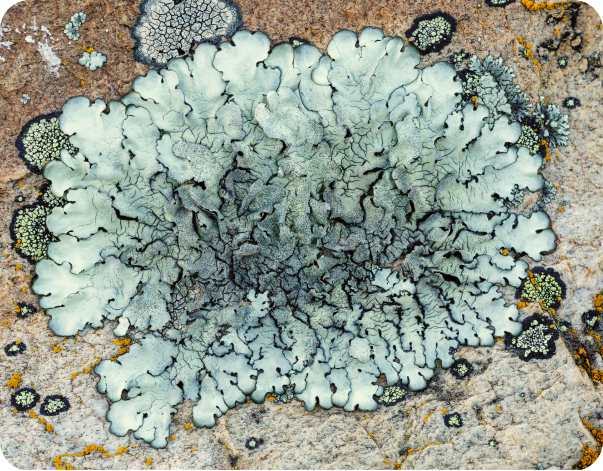Lichen is a nonprofit that behaves like a startup. This allows our platform to be ignited by philanthropy, but sustained by ethical revenue streams over time. As a nonprofit, Lichen and its donors share the same goal: To expand access to holistic healthcare. Our donors simply realize that the best way to fuel innovation in the healthcare sector is to liberate Lichen from the conflicting interests of making money for investors while delivering care to clients. Said another way, success in the healthcare industry doesn't just mean stealing marketshare, it also means shrinking the market as much as you can.
The good news is, having philanthropic backing provides three, massive competitive advantages:
- Because we are not beholden to deliver profits to investors, Lichen and its clients share the same goal: To be so good at helping people heal and stay healthy that they no longer need our services.
- Because we are not beholden to deliver value back to shareholders, all of the equity that our platform generates can be reinvested into expanding access to care.
- Because we are focused on improving, connecting and integrating existing healing infrastructure, we save the time and money necessary to build a proprietary platform, find product/market fit, drive brand awareness and compete for marketshare. By facilitating collaboration with the client at the center (instead of our brand), we remove significant friction for both clinicians and clients, leading to faster, better care for less money.
So, what's the plan?
Step 1:
Deliver a proof of concept in the form of a Pilot Program, which will take an estimated $5M of the $57B addressable philanthropic market at the intersection of individual, social and ecological healing. We have identified a land partner who is willing to host the pilot program, as well as multiple, reputable research partners across the academic, public and private sectors.
Step 2:
Translate the IP, best practices and business learnings from the pilot program into a holistic healing template that is publicly available, along with the technological infrastructure developed for the pilot. Identify communities who are interested in becoming part of the network. Share learnings, current offerings and interested communities with potential donors to further philanthropic investment.
Step 3:
As network revenue grows, we will subsidize less profitable business units (e.g. Training, Treatment and Research) with more profitable revenue streams across the business. Once an existing community network is self sustaining, we will invest profits in opening up additional locations, pairing a high SES community with a lower SES community, to equitably expand access to care

As for our path to self sustainability: There are many potential revenue streams, some are dependent on procuring a large user base, while others are not. Because users own their data, any data monetization efforts would be approved by network members. All research will be double-blind to protect user privacy.

So, let's say we're successful at building our network. How will we distribute resources across it?
Because health is balance and reciprocity restores balance across complex ecosystems, we consider the entire healing ecosystem when investing resources at the community level. As always, this means starting with ourselves, so we can best support the land, plants and animals who hold the healers, who hold those healing.
Employees
While Lichen will have a small employee footprint due to the nature of our platform, employee pay is based on individual need, not position or rank. Because our mental, physical, social and environmental health is dependent on our economic wellbeing, delivering need-based compensation is a healing act.
Land
We know that the land, animals and elements are conscious beings with their own needs and desires. That said, we live in a system that assigns ownership to land. If network members require resources to restore, protect or maintain the land on which they offer healing to the community, donations, and/or revenue is passed through to the land steward via the Lichen Land Trust. If private owners wish to remove their land from the trust, they must demonstrate that any investment made in their property has been repaid to the community via free or reduced fee services. If they wish to sell the land for profit, the value added via Lichen Land Trust must be paid out to the community to use in service of healing as the community sees fit. Where local investment in community infrastructure is made, a community-elected council will determine how to best spend money paid out via the trust.
Practitioners
Like employees, the financial situation of the practitioner is considered when they set fees. While the healing arts are often a calling, not a profession; the economic wellbeing of the practitioner is critical to their wellbeing, which is critical to the quality of the client's care. Alchemizing disease into wellbeing often requires significant investment of the practitioner's energy, which requires that they also receive the healing support they need to fully transmute it when their work is done. When a client is in need of a service from a practitioner but cannot pay the wage they've set to meet their needs, Lichen subsidizes the difference to assure that neither practitioner nor client needs to sacrifice their wellbeing due to lack of resources.
Clients
Like employees and practitioners, Lichen assesses the complete delta between what the client needs to heal and the resources they have at their disposal. For some this could mean paid time off work, as well as subsidized treatment. For others, no support will be required. Wherever possible, Lichen will help the client access available resources (like insurance coverage or public benefits) before dipping into philanthropic donations and profitable revenue streams to cover client care.
We have a ton more detail about our business vision and plan. We'd love to connect with you and share more.
